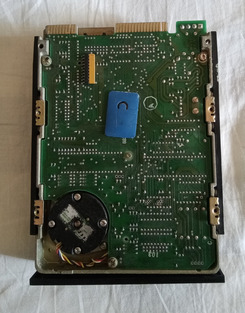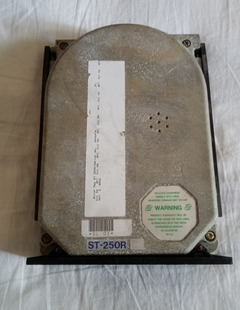First post, by Nunoalex
Hi everyone
Please advice me and help make sure I give the best possible chance to save this 2 MFM hard drives
So I recently got my hands on 2 MFM hard drives... they are in unknown condition
One is Seagate ST-250R and another is a MicroScience 20mb (type 2)
I would like to turn them on but I am terribly afraid they are stuck and when the motor starts it will rip the heads off or the stepper motor drags the heads along the surface
What is the best thing or is there anything I can do before power up to give them a little better chance of coming up undamaged?
1) should I just go along and power them up and there is nothing I can do
2) Should I gently twist them a few times before in order to loosen something that might be stuck?
3) should I drop a few drops of oil on the stepper motor (and/or spindle shaft) and wait a few days
4) should I open them and very gently try to rotate the platters wearing gloves and touching only the edges
5) should I try to very gently pass a very thin piece of paper (parchment) under the heads siting on the platters in order to unstuck them in case they are stuck and then spray some compressed air before closing them again
6) should I start them on a dorsal position so the heads are aligning vertically to the platters instead of horizontally
7)should I power them up in small bursts of 1/2 second and assess the reaction ?
😎 should I bang them heavily on the side with a screwdriver like mister Adrian Digital Basement? 😉
I really would like to hear your opinions because I would really like to preserve this 2 pieces of computer history, as we all know MFM drives are slowly all going bad and disapearing ...
I pretend to test the ST-250R first because it seems to have auto-park so it will be ok just to power it without a PC
The Microscience I will power only when I am ready with software to initialize it and park before turning it off (in case they do survive the power on)
Well thanx all!!
Best regards (photos of the drives soon)
Nuno

